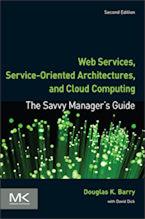SQL-92

SQL-92 was developed by the INCITS Technical Committee H2 on Database. This committee develops standards for the syntax and semantics of database languages.
SQL-92 was designed to be a standard for relational database management systems (RDBMSs). It is based SQL-89, which in turn was based on SQL-86. SQL-92 was developed by the ANSI (then NCITS, and now INCITS) X3H2 committee, which originally began work on a SQL standard in 1982.
SQL-92 does not address objects in any way. Nevertheless, SQL-92 forms the basis for JDBC, SQLJ, SQL:1999, and ODMG OQL. Each of these specifications are covered in other parts of this section. See the related content below.
SQL is a database sublanguage that is used for accessing relational databases. The letters don't stand for anything.1 A database sublanguage is one that is used in association with some other language for the purpose of accessing a database. This results in a programming style illustrated by the embedded SQL statements in the following diagram.

An example of an embedded SQL statement that creates a new Person instance would be:
EXEC SQL BEGIN DECLARE SECTION;
char SQLSTATE[6];
char ssan[9];
char name[30];
EXEC SQL END DECLARE SECTIONEXEC SQL
INSERT INTO person VALUES (:ssan, :name);
This code would be in addition to any host programming code. The variables :ssan and :name would need to be set by the host program using the host programming language before execution. If you also wanted to manipulate this new Person instance in the host program, you would need programming code in addition to this code fragment that populates the instance in the programming language along with the instance in the database.
1. According to Jim Melton, the editor of the SQL standard, the proper pronunciation is "ess cue ell," and not "sequel" as is commonly heard. Jim also says that SQL stands for "SQL Query Language" and notes that this is a recursive acronym. In some early prototypes, SQL stood for "Structured Query Language." That is not true for the standard.
Context for SQL-92
Related Articles for SQL-92
The Savvy Manager's Guide
Douglas K Barry is also the author of a book that explains Web Services, service-oriented architecture, and Cloud Computing in an easy-to-understand, non-technical manner.
Web Services, Service-Oriented Architectures, and Cloud Computing: The Savvy Manager's Guide (Second Edition)
by Douglas K Barry with David Dick
This is a guide for the savvy manager who wants to capitalize on the wave of change that is occurring with Web Services, service-oriented architecture, and—more recently—Cloud Computing. The changes wrought by these technologies will require both a basic grasp of the technologies and an effective way to deal with how these changes will affect the people who build and use the systems in our organizations. This book covers both issues. Managers at all levels of all organizations must be aware of both the changes that we are now seeing and ways to deal with issues created by those changes.

